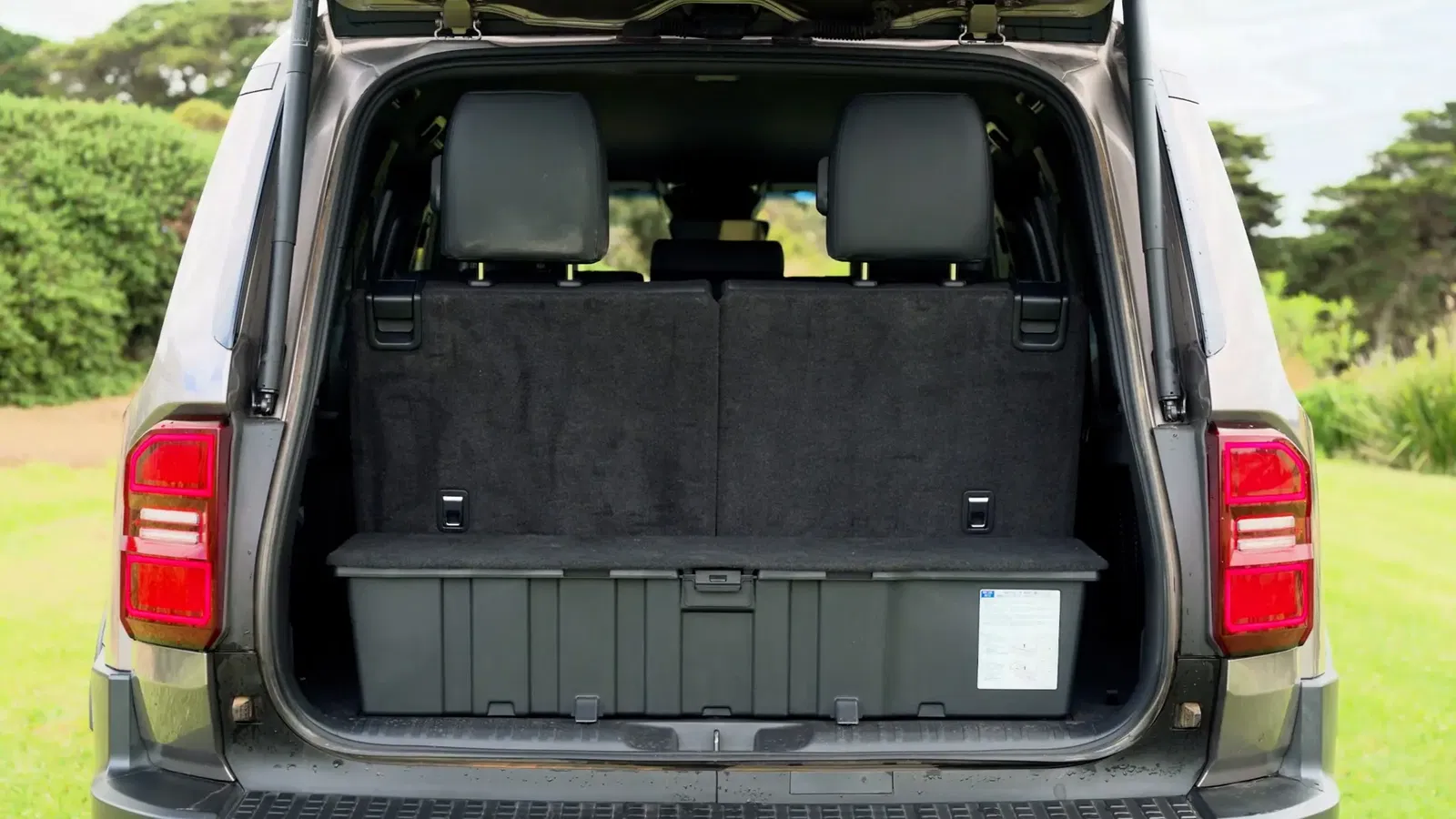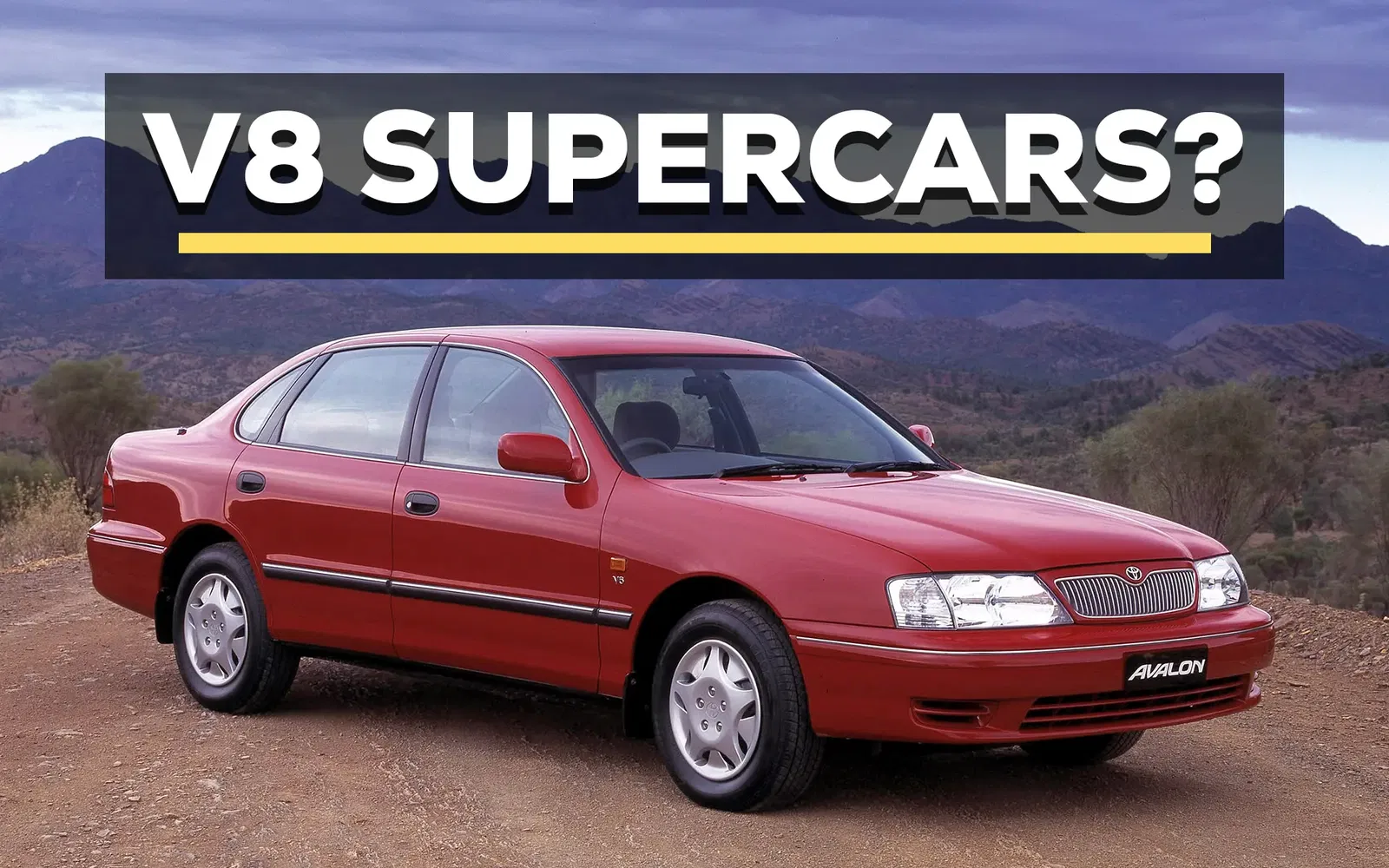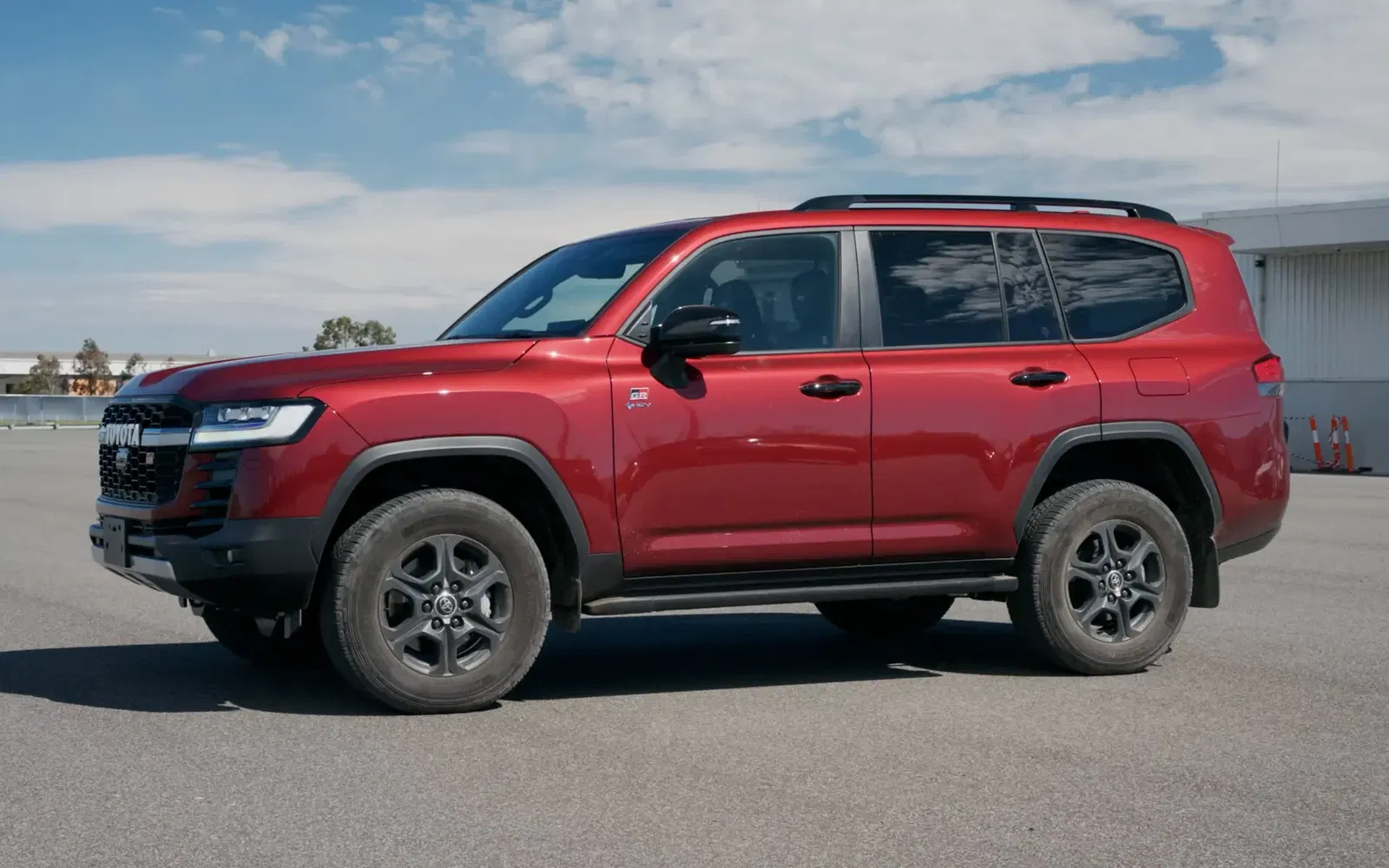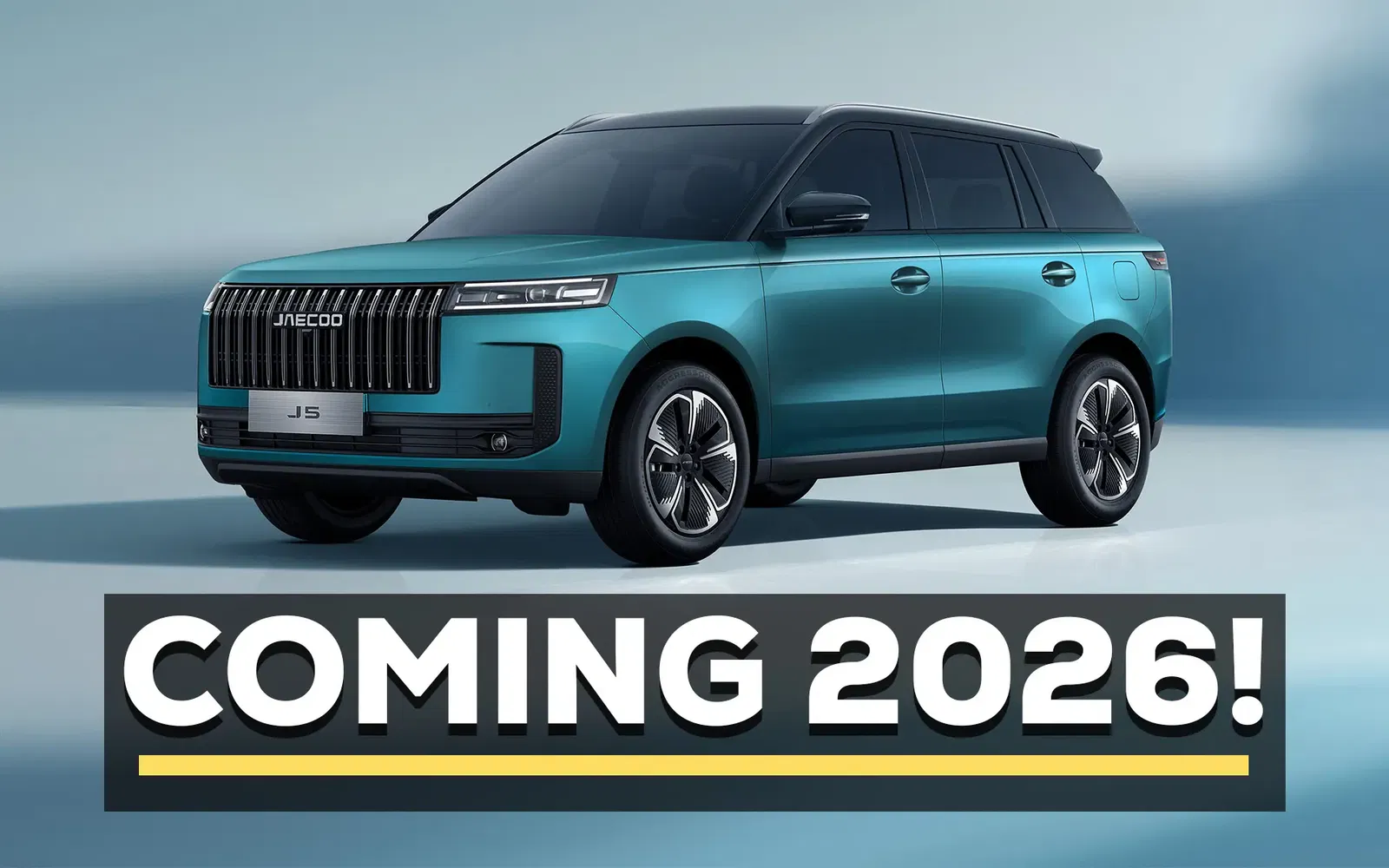For decades, the Toyota LandCruiser Prado has been a staple for Australian families seeking a reliable seven-seater capable of handling both urban commutes and rugged off-road adventures.
However, the introduction of the 250 Series Prado in 2025 has left many questioning whether Toyota has compromised too much, particularly given its price increase of at least $10,000 compared to the outgoing model. Enter the Ford Everest, a rival that has upped the stakes with powerful engine options, modern technology, and competitive pricing.
This detailed comparison dissects both vehicles across reliability, exterior design, interiors, driving dynamics, practicality, off-road performance, and value. Every detail from our recent video review and past insights has been incorporated to give you the ultimate guide to deciding which SUV deserves your hard-earned money.
After driving both vehicles, I'm going to give you my honest thoughts on how the Prado and Everest compare; and which one I think is better overall.
Round 1: Reliability
Reliability has always been a cornerstone of the Toyota LandCruiser Prado’s reputation. However, with the introduction of the 48V mild-hybrid system in the 250 Series, the equation has become more complex. While the system is designed to improve fuel efficiency and reduce emissions, it introduces new vulnerabilities that challenge Toyota’s historical reliability dominance.
The Prado’s mild-hybrid system pairs the familiar 2.8L turbo-diesel engine (150 kW and 500 Nm) with a small electric motor that contributes an additional 8.4 kW and 65 Nm of torque.

This setup offers smoother low-speed performance and reduces strain on the engine by running accessories like air conditioning. However, the hybrid battery’s placement and cooling system have raised concerns. Located in a compartment with air inlets and outlets, the battery is vulnerable to water ingress during off-road use.
Notably, there has been at least one confirmed case of the hybrid system failing after water wading—a major issue for an SUV with a claimed 700mm wading depth. This flaw undermines the Prado’s suitability for Australian off-road conditions, where water crossings are common.

The Prado’s 1GD-FTV engine, while known for its robustness, has a history of reliability issues. Early models faced widespread Diesel Particulate Filter (DPF) clogging problems, leading to a class-action lawsuit. While Toyota resolved this issue for engines built after May 2020, other concerns persist, such as timing chain stretch and Exhaust Gas Recirculation (EGR) cooler failures. These problems, although manageable with regular maintenance, add complexity for owners. Timing chain stretch, for instance, can degrade engine performance and cause severe damage if not addressed promptly, typically around 150,000 km. Similarly, EGR cooler cracks can lead to coolant leaks, overheating, or contamination of the exhaust system.
On the other hand, the Ford Everest has faced its share of scrutiny but has demonstrated significant improvements in reliability, particularly with its 2.0L bi-turbo diesel engine. This powertrain has reported minimal issues, standing out as a reliable choice for buyers. The 3.0L V6, while more powerful, had isolated reports of bottom-end failures in early builds, but these incidents do not appear to be widespread. Ford’s commitment to addressing past problems, such as software updates to fix Apple CarPlay stuttering and other tech glitches, showcases its focus on continuous improvement.
.webp)
Historically, the Everest’s reliability reputation has been tarnished by early issues, such as glow plug failures in V6 models produced between 2020 and 2021. These faults, which could lead to starting problems in cold conditions or engine damage, have since been rectified in newer builds. Additionally, Ford’s responsive approach to customer complaints, including deploying software fixes and addressing hardware concerns, highlights its dedication to refining the Everest’s reliability.
When comparing the two, the Everest currently holds the edge. While Toyota’s 48V mild-hybrid system introduces innovative features, it also adds a critical vulnerability for off-road use. In contrast, the Everest’s engineering, especially in its 2.0L bi-turbo variant, prioritises reliability with fewer compromises. For prospective buyers, the Everest’s overall reliability track record—combined with Ford’s proactive updates—makes it the more reassuring choice in this category.
Winner: Ford Everest
Round 2: Exterior Design
The Toyota LandCruiser Prado leans heavily into a retro-inspired design, blending classic LandCruiser DNA with modern touches. Its boxy silhouette, bold "TOYOTA" lettering across the grille, and pronounced power bulges on the bonnet exude a rugged, old-school charm. This styling appeals to those who value nostalgia and adventure-ready aesthetics, with some even comparing its vibe to the Land Rover Defender. The design not only looks purposeful but also evokes a sense of heritage that many SUV buyers find irresistible.
In terms of size, the Prado measures 4,925mm in length, 1,980mm in width, and 1,870mm in height, with a wheelbase of 2,850mm. These dimensions provide a strong road presence without feeling overly large, making it practical for both urban and off-road environments.

The Ford Everest, meanwhile, takes a more contemporary approach. Inspired by its Ranger ute sibling, it features a bold front grille, angular LED headlights, and a muscular profile that feels cohesive and modern.
The Everest measures 4,914mm in length and is notably wider at 2,207mm, giving it a broad and commanding stance. Its slightly longer wheelbase of 2,900mm contributes to its confident proportions, and the wider body enhances its visual impact on the road.

Both SUVs have distinct design philosophies that cater to different tastes. The Prado’s retro-inspired styling sets it apart as a nod to Toyota’s rich history, while the Everest’s modern, truck-based design reflects a more contemporary aesthetic. Both approaches work well within their respective contexts, but the Prado’s unique blend of heritage and functionality gives it a slight edge for those seeking a design that stands out.
Winner: Toyota LandCruiser Prado
Round 3: Interior Comfort and Practicality
Inside the cabin, the Toyota LandCruiser Prado and the Ford Everest take distinctly different approaches to comfort and practicality, reflecting their respective brand priorities.
The Prado’s interior has undergone a significant modernization with the 250 Series, featuring a 12.3-inch touchscreen that supports wireless Apple CarPlay and Android Auto.

The interface is quick and user-friendly, complemented by physical dials for climate control—a thoughtful touch for usability while driving. The synthetic leather upholstery feels durable and premium, and the front and second-row seats provide good support for long trips. However, there are some shortcomings.
The second-row seats, while offering reclining functionality, do not slide forward or backward, limiting flexibility when managing legroom for third-row passengers. Additionally, the raised floor due to the hybrid battery compromises the third-row seating, making it cramped for adults and uncomfortable even for children on longer trips. Storage options up front are also somewhat limited, with small bins and shallow compartments.

Build quality is another area where the Prado struggles. While the cabin design looks modern, lower trims feature materials that feel less premium, and even higher trims suffer from tinny-sounding doors that detract from an otherwise solid impression.

The Everest, in contrast, excels in interior practicality and comfort. Its cabin feels premium, with soft-touch materials in key areas and a well-thought-out layout. The second-row seats not only recline but also slide forward and backward, allowing better access to the third row or more room for second-row passengers. The third row is more spacious than the Prado’s, offering better headroom and legroom, making it more suitable for adults. Even with all three rows in use, the Everest maintains a practical layout, aided by features like a split glovebox and pop-out cupholders that enhance convenience for families.

The Everest’s 12-inch touchscreen infotainment system is intuitive and feature-packed, with a balanced mix of physical and touch controls for seamless operation. Its design prioritises everyday usability, making it a strong contender for those looking for a practical family SUV.
Overall, while the Prado has made strides in modernising its cabin, its limited third-row space, lack of sliding second-row seats, and reduced storage space due to the hybrid system hold it back. The Everest, with its superior interior flexibility, more comfortable third-row accommodations, and thoughtful features, clearly caters better to families and daily practicality.


Winner: Ford Everest
Round 4: Driving Dynamics
The Toyota LandCruiser Prado and Ford Everest adopt distinct driving philosophies, with the Prado focusing on comfort and the Everest aiming for a balance between refinement and capability.
The Prado’s suspension is designed to deliver a cushioned, comfortable ride, especially on rough terrain. It absorbs bumps well, making it ideal for long-distance cruising on uneven roads. However, this soft setup compromises its handling. On winding or high-speed roads, the Prado exhibits noticeable body roll, and its light, vague steering lacks feedback, reducing driver confidence. The Prado feels at home on straight highways or slower-paced urban drives but struggles when the roads demand sharper responses.

Under the bonnet, the Prado features a single engine option: a 2.8L turbo-diesel 4-cylinder with 150 kW of power and 500 Nm of torque, now paired with a 48V mild-hybrid system. This system enhances low-speed torque and smooth stop-start performance, improving efficiency for urban driving. However, at higher speeds, the Prado lacks urgency, with a 0–100 km/h time of approximately 10.5 seconds. While the engine prioritises reliability and emissions compliance, it may feel underpowered for drivers seeking more dynamic performance.

The Ford Everest, on the other hand, offers a more dynamic and engaging driving experience. Its firmer suspension strikes a balance between comfort and stability, reducing body roll and providing more precise handling. The Everest feels composed and planted at higher speeds, with direct steering that offers better feedback than the Prado. Whether navigating urban streets or rural highways, the Everest instills confidence in the driver.
The Everest also stands out with its engine variety, providing buyers with the flexibility to choose a powertrain that suits their needs:
- 2.0L bi-turbo diesel 4-cylinder: 154 kW and 500 Nm, offering smooth and efficient performance with a 0–100 km/h time of approximately 9.9 seconds.
- 3.0L V6 turbo diesel: 184 kW and 600 Nm, delivering effortless acceleration and superior towing capability, achieving a 0–100 km/h time of just 8 seconds.

Both engines provide better on-road performance than the Prado, with the V6 standing out for its refinement and power delivery. The 3.0L V6 is particularly suited for towing and highway driving, where its ample torque makes light work of overtaking and steep inclines.
In summary, the Prado excels in comfort but lacks the handling finesse and engine performance needed for a versatile driving experience. The Everest’s sharper dynamics, multiple engine options, and stronger powertrains make it the better choice for those seeking an SUV that performs well across varied driving conditions.
Winner: Ford Everest

Round 5: Practicality
Practicality is a crucial factor for families and adventurers alike when choosing a seven-seat SUV, and the Toyota LandCruiser Prado and Ford Everest offer different levels of usability and versatility.
The Prado takes a significant step backward in terms of boot space and interior layout due to its 48V mild-hybrid system. The hybrid battery placement raises the boot floor, resulting in a noticeable reduction in storage capacity. With all three rows of seats in use, the Prado offers just 182 litres of storage space, which is barely enough for a few school bags or a small grocery run.

Folding down the third row increases capacity to 906 litres, but the raised floor limits vertical space, making it awkward to load larger or bulkier items like prams or suitcases.

Even with the second and third rows folded flat, the total capacity is 1,829 litres, but the design remains constrained by the hybrid system. The five-seat variants are slightly better, offering 954 litres behind the second row, but still fall short of expectations for a vehicle of this size.

Interior flexibility is another area where the Prado struggles. While the second-row seats recline, they do not slide forward or backward, which limits the ability to adjust legroom for passengers in the third row. Furthermore, the raised floor in the third row reduces comfort significantly, making it uncomfortable for adults and even less ideal for children on long journeys.
The Ford Everest, on the other hand, excels in practicality with thoughtful design choices and a more versatile interior layout. With all three rows in place, the Everest offers 259 litres of storage, significantly more than the Prado, making it far better suited for everyday errands.

Folding the third row down increases capacity to 898 litres, and dropping both the second and third rows opens up 1,823 litres of flat, usable space. The Everest’s boot layout is intelligently designed, with a flat floor that simplifies loading bulky items. This makes it far more family-friendly, whether for grocery runs or packing for a weekend away.

The interior of the Everest further enhances practicality with its sliding and reclining second-row seats, which allow for easy adjustment of legroom and improved third-row access. The third row itself is more spacious and comfortable than the Prado’s, offering better headroom and legroom, making it suitable for adults on short trips and children on longer ones. Additionally, the Everest includes clever storage features, such as a split glovebox and pop-out cupholders, which add to its everyday usability.
Overall, while the Prado offers a rugged, functional cabin, its hybrid system compromises practicality significantly. The Everest outshines it with better interior flexibility, superior third-row comfort, and a more usable cargo area. For families and adventurers alike, the Everest delivers a practical package that is hard to beat.
Winner: Ford Everest

Round 6: Off-Road Capability
Both the Toyota LandCruiser Prado and the Ford Everest have been designed with off-road enthusiasts in mind, but they take different approaches to achieving off-road excellence. While the Prado carries the weight of its LandCruiser heritage, the Everest impresses with its modern off-road technology and practicality.
The Prado is equipped with solid off-road credentials, including a full-time 4WD system and a center locking differential as standard. Its ground clearance ranges from 210mm on lower trims (GX and GXL) to 221mm on higher trims like the VX, Altitude, and Kakadu. These numbers are adequate for tackling uneven terrain, but they fall short compared to the Everest’s setup.

The Prado also offers competitive approach and departure angles, with approach angles between 31 and 32 degrees, depending on the trim, and a departure angle of 17 degrees. However, the Prado’s departure angle is significantly hindered by the raised rear and hybrid system, making it more likely to scrape the rear bumper on steep descents.
Water wading is another key area where the Prado stumbles. Its claimed 700mm wading depth is respectable on paper, but the hybrid system introduces a major vulnerability. The placement of the hybrid battery’s cooling fan and air vents makes it susceptible to water ingress, as evidenced by cases where wading through water caused the system to fail. This is a critical flaw for an SUV marketed as off-road capable, and it undermines confidence in the Prado’s ability to handle challenging water crossings.

Adding to its challenges, essential off-road features like a rear locking differential and sway bar disconnects are only available on higher trims, such as the Altitude and Kakadu. This limits the off-road readiness of lower trims, requiring buyers to spend significantly more to access these capabilities.
The Everest excels in off-road practicality, offering many features as standard or at lower price points compared to the Prado. With a ground clearance of 226mm across most trims, the Everest provides better protection for the undercarriage when navigating rocky or uneven terrain. Its approach angle of 30.2 degrees is slightly behind the Prado’s, but its superior 23-degree departure angle ensures better clearance on steep descents.

Water crossings are a strong suit for the Everest, with a class-leading 800mm wading depth that confidently outperforms the Prado. This makes it a more reliable choice for Australian conditions where river crossings and heavy rain are common.
Off-road technology in the Everest is also a standout. Most trims come equipped with off-road drive modes, a rear locking differential, an auto-locking center differential, and permanent 4WD (optional on the base Ambiente). These features ensure the Everest is ready to handle a variety of terrains, including sand, mud, and rocks, without needing expensive upgrades. The availability of these features across a broader range of trims makes the Everest a more accessible option for off-road enthusiasts.

While the Prado has a strong off-road legacy, the Everest’s superior ground clearance, water-wading capability, and standard off-road features make it the better-equipped SUV for tackling Australia’s toughest conditions. The Prado’s hybrid system and limited off-road features in lower trims hinder its overall appeal in this category.
Winner: Ford Everest
Round 7: Value
When it comes to value for money, the Toyota LandCruiser Prado and Ford Everest take distinctly different approaches, and the differences in pricing, features, and overall practicality are stark.
The Prado starts at $72,500 for the GX trim and goes up to $99,990 for the range-topping Kakadu. While it offers a reputation for reliability and off-road capability, many of its most desirable features are locked behind higher-spec trims. For example, critical off-road tools like a rear locking differential and sway bar disconnects are only available on the Altitude trim and above, which starts at $92,700. This means buyers looking for a well-equipped off-roader must pay a significant premium.

Additionally, the Prado’s raised boot floor, cramped third row, and compromised practicality due to the hybrid system make it harder to justify the steep price tag. While its retro-inspired design and Toyota’s reputation for reliability hold appeal, the Prado struggles to match its competitors when it comes to delivering value for money in this segment.
The Everest offers a much broader range of options at more accessible price points. It starts at $54,240 for the base Ambiente trim and tops out at $81,200 for the Platinum. Even mid-tier trims, like the Trend V6 at $67,040 and the Sport V6 at $74,640, include key features such as permanent 4WD, off-road modes, and a more powerful engine than the Prado. This means buyers get a more capable, feature-packed SUV without needing to opt for the top trim.
.webp)
The Everest also excels in practicality and technology, offering a better third-row experience, more boot space, and premium materials at lower price points. Its 3.0L V6 turbo diesel engine, with 184 kW and 600 Nm, outperforms the Prado’s sole 2.8L engine, making the Everest a better choice for towing and long-distance driving. For buyers prioritising overall capability and comfort, the Everest offers far greater value than the Prado.
The Prado’s pricing structure and compromises in practicality make it hard to justify its cost, especially when compared to the Everest’s more affordable trims, superior features, and all-rounder capabilities. For families and adventurers alike, the Everest delivers a better balance of affordability, functionality, and performance.
Winner: Ford Everest

Final Thoughts
After putting the 2025 Toyota LandCruiser Prado and the 2025 Ford Everest head-to-head across key categories, it’s clear that these SUVs cater to different priorities and audiences. Both vehicles offer strong credentials, but the Everest edges ahead in several critical areas, making it the more well-rounded choice for most buyers.
Here’s the final tally:
- Reliability: Ford Everest
- Exterior Design: Toyota Prado
- Interior Comfort and Practicality: Ford Everest
- Driving Dynamics: Ford Everest
- Practicality: Ford Everest
- Off-Road Capability: Ford Everest
- Value: Ford Everest
Final Score: Ford Everest 6 – Toyota Prado 1
The Toyota LandCruiser Prado retains its heritage-driven appeal with retro styling and a cushioned ride, making it a strong choice for those who prioritise comfort and brand legacy. Its nostalgic design resonates with fans of Toyota’s rugged lineage, but compromises introduced in the 250 Series—particularly the raised boot floor, cramped third row, and limitations of the hybrid system—detract from its practicality and off-road readiness. While the Prado’s design is unique and evocative, it struggles to justify its premium pricing when compared to the better-equipped competition.

The Ford Everest, by contrast, delivers a more balanced and versatile package. Its modern design, interior flexibility, superior driving dynamics, outstanding off-road capability, and competitive pricing make it the clear winner in most categories. With multiple engine options, including the powerful 3.0L V6, and thoughtful features like sliding second-row seats and a practical boot layout, the Everest is an SUV designed to cater to Australian families and adventurers alike. Moreover, its accessible pricing across the range solidifies its position as a high-value option in the segment.

In the end, the choice depends on your priorities. If Toyota’s legendary badge and nostalgic charm hold strong appeal, the Prado may still win your heart. However, for those seeking superior value, practicality, and performance in a seven-seat SUV, the Ford Everest is the clear champion.










FAQ
Which SUV is more reliable, the Toyota Prado or Ford Everest?
While Toyota is known for reliability, the Prado’s new 48V mild-hybrid system has introduced vulnerabilities, particularly during water crossings. The Everest, especially with its 2.0L bi-turbo diesel engine, has shown strong reliability and fewer issues overall, making it the more dependable choice for most buyers.
Which SUV has better off-road capability?
The Ford Everest outshines the Prado with superior ground clearance (226mm vs. 221mm), a best-in-class 800mm wading depth, and standard off-road features like a rear locking differential and drive modes on most trims. While the Prado has a strong off-road heritage, its hybrid system’s vulnerability to water ingress and limited features on lower trims hold it back.
Which SUV is more spacious and practical for families?
The Ford Everest is more family-friendly, offering more storage space (259L vs. 182L with all rows up), sliding and reclining second-row seats, and a more comfortable third row. The Prado’s raised boot floor due to the hybrid battery significantly compromises its practicality, especially for larger families.
Which SUV performs better on the road?
The Everest’s sharper handling, firmer suspension, and more powerful engine options (up to 184kW and 600Nm with the 3.0L V6) make it better suited for Australian road conditions. The Prado focuses on comfort with its soft suspension but lacks agility and responsiveness, especially at higher speeds.
Which SUV offers better value for money?
The Ford Everest is significantly more affordable, with a starting price of $54,240 and better-equipped trims at lower price points. The Prado, starting at $72,500, charges a premium while offering fewer features and compromising on practicality. The Everest provides better value for families and adventurers alike.
Which SUV is better for towing?
The Ford Everest, particularly with its 3.0L V6 turbo diesel engine, offers superior towing performance thanks to its 600Nm of torque. While the Prado’s 2.8L engine with 500Nm of torque is capable, it lacks the effortless power delivery of the Everest, making the latter the stronger choice for towing heavy loads.
Sign up to our newsletter
Be the first to know when we drop new car reviews.
.avif)









